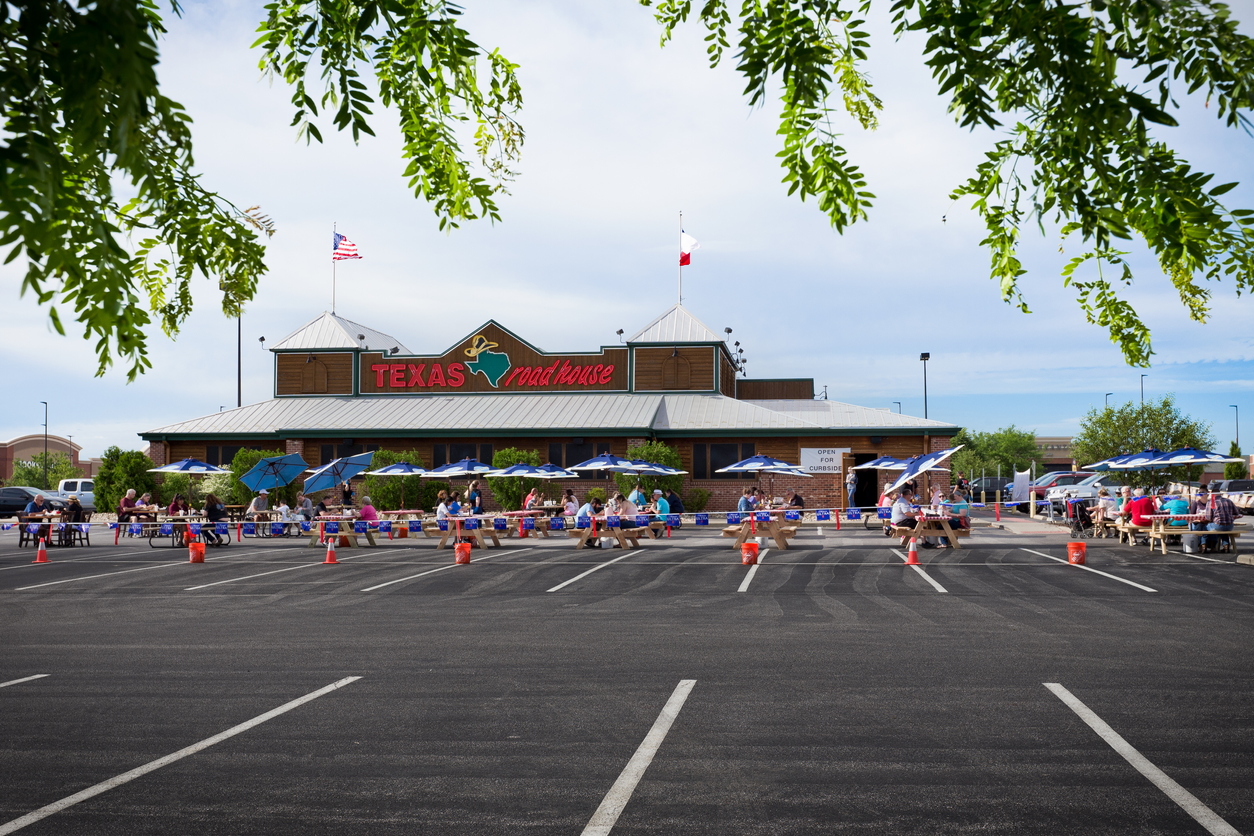
We all know that the parking industry has taken a hit during the Covid-19 pandemic. Parking occupancy plummeted as cities entered lockdowns, people were encouraged to work from home, travel was suspended and shops, restaurants, leisure facilities, and venues were closed.
But, with vital services needing to continue and people desperate for socially-distanced entertainment, parking facilities provided the ideal backdrop for a whole range of alternatives. Some of these helped parking asset owners give back to the community and promote their social responsibilities whilst others offered much-needed revenue streams during a time of economic uncertainty.
Here are our top six ways that parking facilities have been repurposed during the coronavirus pandemic:
1. Testing Facilities
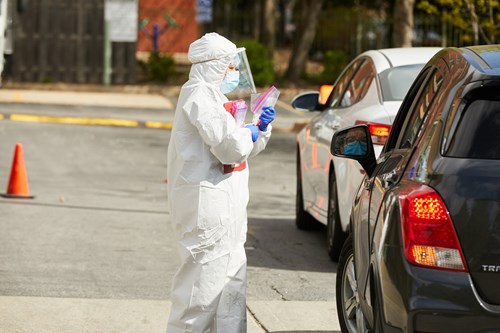
At the beginning of the pandemic, many outdoor parking lots were transformed into Covid-19 testing facilities. Their very nature made them ideally suited to this purpose as they were easily accessible to drivers and the ample, open-air space ensured social distancing measures could be upheld. At Glasgow Airport, the long-stay car park became a drive-through testing facility for NHS staff and Walmart and IKEA were just two large companies that gave over their parking lots for this purpose.
2. Socially Distanced Sidewalks
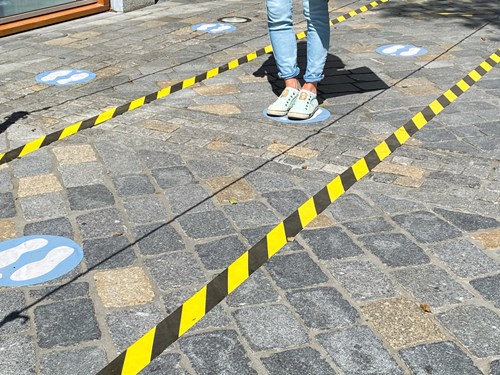
Cities prepared for the lifting of strict lockdowns by considering how they would implement social distancing measures once shoppers returned. Narrow sidewalks would now need to accommodate passers-by and queueing customers, waiting to enter shops. In many places, the simple solution to this problem was to extend the sidewalks into on-street parking bays to ensure that people had enough room to pass one another.
3. Drive-In Cinemas
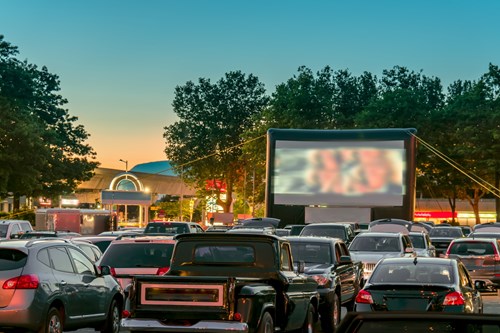
With few of the usual entertainment and leisure venues and facilities able to open, drive-in cinemas have seen a resurgence during the coronavirus pandemic. Perfectly equipped to host movie nights, parking lots across the world have transformed into drive-in cinemas, helping to generate much-needed revenues during the parking downturn. At Vilnius Airport, a viewing of the Oscar-winning South Korean drama Parasite was attended by 150 cars, and restaurants also jumped on the drive-in cinema trend as lockdown forced them to close their establishments to diners.
In Europe, drive-in culture has been taken a step further, as festival-goers replace crowds with the comfort of their own cars. The Henley Festival will be presenting their Car Park Party, bringing together comedy, theatre, and karaoke and taking it on the road to various venues across the UK.
4. Restaurant Pick-Ups and Food Delivery Pick-Ups
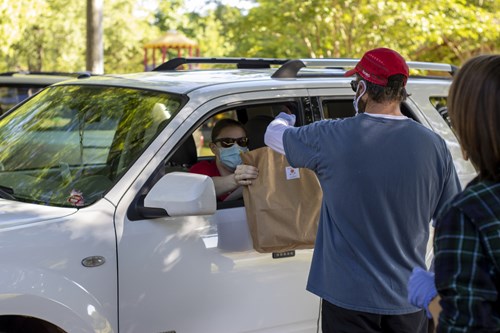
Pre-pandemic, parking facilities were already diversifying their offering and transforming into mobility hubs. Facilities had begun incorporating pick-up stations for a variety of services and lots and garages are even doubling as logistic hubs during downtime. The pandemic helped spur some operators and asset owners to begin schemes such as grocery pick-ups whilst others provided space for grocery delivery services to operate.
And, before restaurants were able to reopen many turned to delivery and pick-up as a means to survive the Covid-19 crisis. To encourage customers to pick-up takeout food on-street parking meters in some cities were bagged and replaced with free, short-term parking to enable people to pick up food and restaurants to stay afloat.
5. Al Fresco Dining
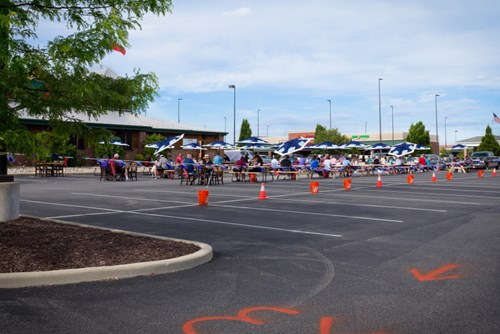
As restaurants began to reopen they had to introduce inventive solutions to adhere to strict social distancing measures whilst ensuring profitability. As tables now need to be set further apart, restaurants expanded their footprint to increase the number of covers they could achieve – otherwise, their overhead costs would outrun any profits made. As indoor capacity cannot be increased, restaurants looked to the curb and their parking lots for solutions.
In the US, most cities require restaurant owners to provide 10 parking spaces for every 1,000 square feet of a restaurant. But now that restaurants are forced to remove tables from their interiors many are embracing alfresco dining. In cities such as Los Angeles, a new initiative has enabled restaurants to immediately turn public space, such as sidewalks and parking spaces, into outdoor dining areas.
6. Church Services, Weddings, and Funerals
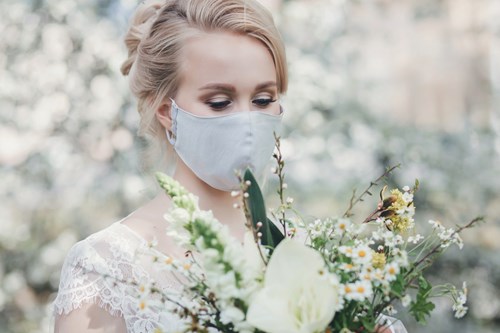
Services and ceremonies were also suspended during coronavirus lockdowns. Unable to take place in regular places of worship, wedding ceremonies were canceled entirely, and sadly funerals were restricted to few or no attendees. Rock Church in Virginia Beach is just one congregation that took their services into the parking lot, with the pastor leading from a stage as congregants tuned in to listen on the radio.
In Orange County, the cancellation of non-essential gatherings led to 800 marriage appointments being postponed until the Honda Center parking lot was transformed into a wedding venue. Registrars performed ceremonies from three ticket booths, lent to them by Orange County fairgrounds, with a capacity of 60 visits per day.
As restrictions begin to be lifted, car park occupancy steadily increases but asset owners and operators have had a glimpse of alternatives that are available should a possible second wave of coronavirus lead to similar declines in occupancy rates.





